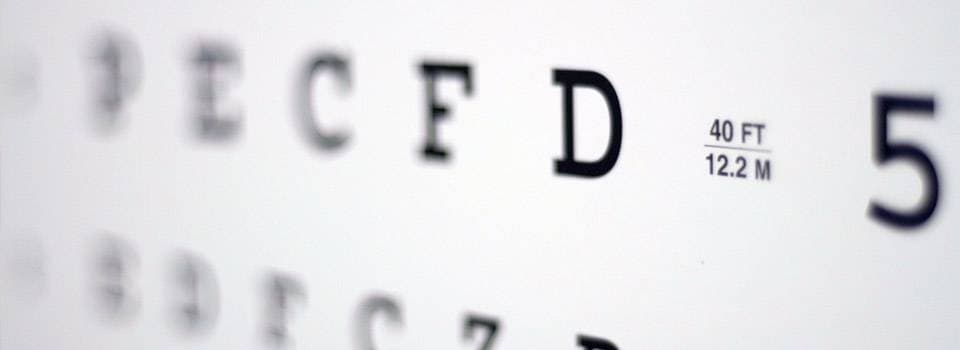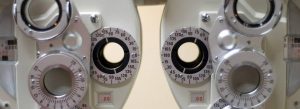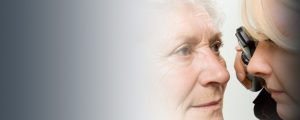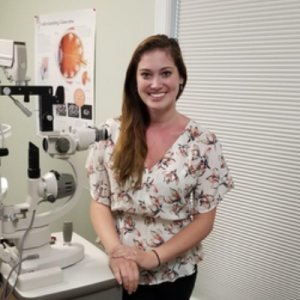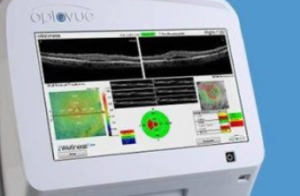Your visual acuity, or clarity of vision, represents how well you are able to see objects or images at a given distance.
Visual acuity is tested using a standardized chart during a routine eye exam, but may also be performed in a doctor’s office or school setting, during a vision screening.
What is the Snellen visual acuity test?
The Snellen test is a visual acuity chart that consists of 11 rows of capital letters, with one large letter at the top of the chart. As you move down the chart, the letters decrease in size, while the rows increase in length.
The size of the letters are not random and are carefully measured and presented.
There is one specific row of letters, usually close to the bottom of the chart, known as the 20/20 line. This line has letters which a person with ‘20/20’ sight will be able to read from 20 feet away.
When using the Snellen test in an eye doctor’s office, the chart is generally projected onto the wall, approximately 20 feet away from the examination chair.
In some cases, if the examination room is smaller in size, the Snellen chart will be posted behind the examination chair and viewed through a mirrored reflection across the room.
How does the visual acuity test work?
During the visual acuity test, your eye doctor will instruct you to cover one eye while you read the letters aloud, starting from the top of the chart, until you can no longer see the letters clearly.
Some eye doctors ask their patients to simply read the smallest line they are able to see, instead of starting from the top of the chart, as this saves a significant amount of time.
After your visual acuity is determined for that eye, your second eye will be tested in the same way. The test is performed with and without eyeglasses, for the most accurate results. The results of the test are based on the line that you can correctly read most of the letters.
What is the random E test?
This test uses a “tumbling E”, a capital E that faces different directions, and decreases in size as you move down the chart. Eye doctors use this chart for young children or adults who are unable to identify letters.
During the test, the patient will be asked to identify the direction in which the E is facing, up, down, left, or right, until they can no longer see the E clearly.
Similar to the Snellen test, the results are based on the line that most of the E’s can be identified correctly.
What is 20/20 vision?
Visual acuity is measured in a numeric fraction, such as 20/20 or 20/40. The top number represents the distance from the chart (20 feet), and the bottom number represents the distance at which the average person with normal eyesight can correctly read the same line.
If your eye doctor tells you that you have 20/20 vision, you can assume that you have normal visual acuity, and are able to see what most people can see when they stand 20 feet away from an object.
What does it mean if I don’t have 20/20 vision?
If you don’t have 20/20 vision, you are not alone.
Only about 35 percent of adults have 20/20 vision without any corrective eyewear or surgery.
What is 20/40 or 20/60 vision?
If you have 20/40 vision, it means that your vision is half as good as a person with 20/20 vision. Meaning, you’re only able to clearly see the letters that are double the size of the 20/20 letters.
This can be applied to other visual acuities as well:
If you have 20/60 vision, it means that you can only clearly see the letters that are 3x the size of the 20/20 letters.
What is 20/10 vision?
If you have 20/10 vision on the other hand, it means that you have very sharp vision and can see better than a person with 20/20 vision. Having 20/10 vision means that you can see letters that are half the size of the letters most people can see from 20 feet away..
In most states, you are required to pass a visual acuity test with at least 20/60 or better in order to obtain a driver’s license.
A visual acuity of 20/200 or worse in the “better” eye, is generally considered the parameter for legal blindness.
SEE RELATED: Why Do Optometrists Use Eye Charts?
Schedule an eye exam with an eye doctor near you if you feel your vision is not as good as it used to be.
Corrective lenses
With eyeglasses, contact lenses, or corrective surgery, 75 percent of adults will achieve 20/20 vision.
If you need corrective lenses, your eye doctor will perform a refraction test to determine what type of refractive correction is needed. Then, your eye doctor will calculate a precise optical prescription for corrective lenses.
If you are interested in vision correction surgery, speak with an eye doctor to discuss the benefits of LASIK eye surgery and to find out if you are a candidate for this type of vision correction.
If I have 20/20 vision, is my vision perfect?
Many people believe that having 20/20 vision is equivalent to “perfect vision”. Unfortunately, this is not true.
There are 17 key visual skills, including eye coordination, peripheral vision, focusing ability, depth perception, color vision, etc., that contribute to your ability to read, write, play sports, use the computer, and more.
If you have 20/20 vision, this number is a measurement of your distance vision acuity. This number does not represent your near vision acuity, or the integrity of your visual skills. These measures must be tested individually using specific vision tests, in order to obtain accurate results and determine how well you are able to see for successful performance of everyday activities.
When should I have a visual acuity test?
A visual acuity test is included as part of a regular eye exam, and may be used for a variety of reasons:
- Produce a baseline visual acuity
- Determine the visual acuity in each eye
- Diagnose refractive errors
- Evaluate changes in vision
- Assess the results of LASIK or cataract surgery
- Assess the effects of an ocular disease
When to see an eye doctor
Regular eye exams are a critical component of maintaining your ocular health and vision. Doctors recommend having an eye exam every year or two, depending on your age and risk of developing an ocular disease.
In some cases, visual acuity can change as a result of environmental or hormonal factors, but it is always best to seek your eye doctor’s professional medical advice.
If you notice that your vision is not as sharp as it used to be schedule an appointment with an eye doctor.
LEARN MORE: Guide to Eye Exams
A change in your visual acuity can signal a more significant problem such as an ocular condition or disease, and early detection can facilitate earlier treatment, protecting both your vision and ocular health.

